
Neurologger 3 has been designed to record 16, 32 or 64 neuronal channels having size and weight similar to the second version. Later channel number has been increased up to 96, 128, 192 and 256 by adding additional headstages how this is shown in the picture below.
Similarly to the previous generation, Neurologger 3 has an infrared receiver for precise synchronization with external equipment with the help of infrared transmitter called Neurologger Synchronizer. This feature has been complemented by Bluetooth tranceiver for remote configuring and data access. Sampling rates are freely configurable. Two following configurations give an impression about maximal rates:
Selection of integer sampling rates is also possible. For instance, one can sample 16 channels with frequency 40 kHz, 32 channels with frequency 20 kHz, and 64 channnels with frequency 10 kHz. The logger consumes about 25 mA from 3.7V Lithium-polymeric battery in these modes. Weights of the logger parts are shown in the pictures on the right. There are six types of alternative headstages: 16-channel unipolar with Hirose and Omnetics connectors, 32-channel unipolar with Hirose or Omnetics, and 16-channel differential with Hirose or Omnetics that have identical outlook and weight with corresponding 32-channel headstages. The scale is in centimeters. The 64-channel version of Neurologger 3 has two 32-channel headstages attached. One can also use two 16-channel differential headstages to get 32 differential channels in total. We measured discharge curves of the following Lithium-polymeric 3.7 V batteries (capacity, weight): To simplify attachment of custom-built electrodes we offer wire adapters for both Omnetics and Hirose connectors. One type of wire-adapters for Omnetics and two for Hirose are depicted below.
|
Neurologger 3 was used in recent Science publication Kendall-Bar et al. 2023 and Current Biology publication van Hasselt at al. 2025 | |
|---|---|---|
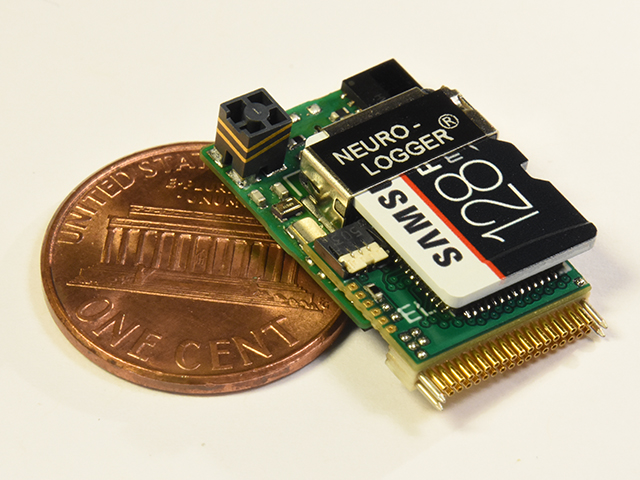 |
||
| Neurologger 3, 32 channels | ||
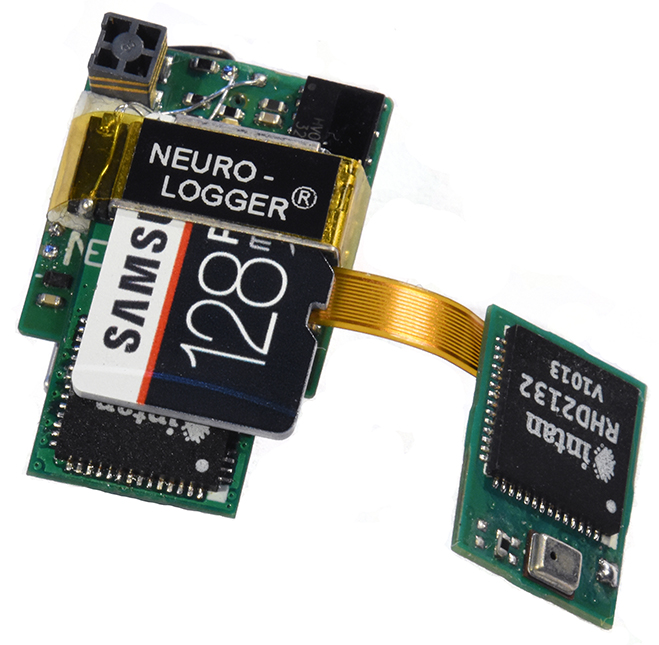 |
||
| Neurologger 3, 64 channels | ||
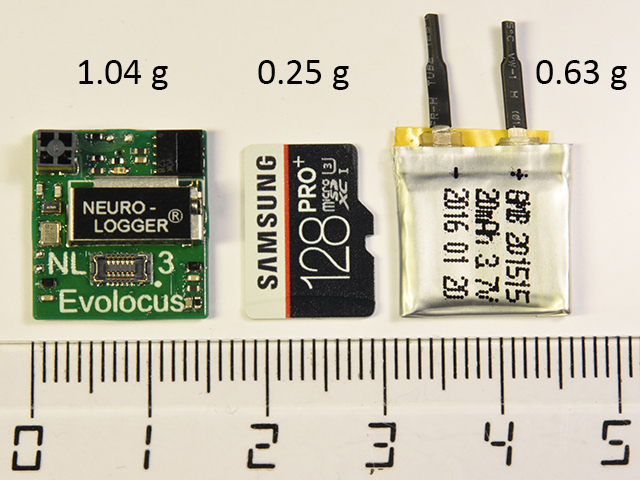 |
||
| Parts of Neurologger 3 | ||
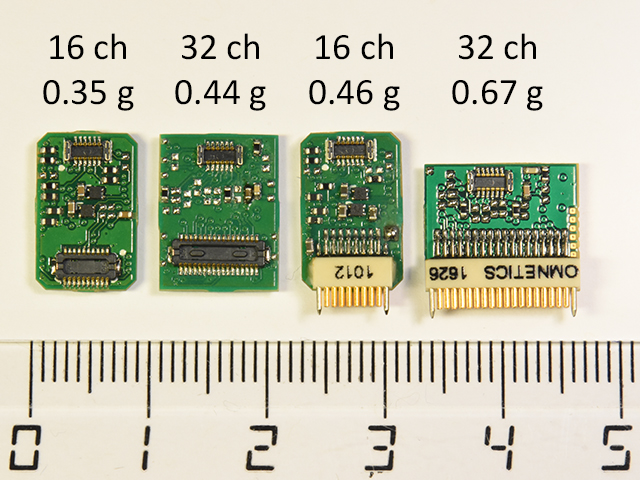 |
||
| Neuronal headstages | ||
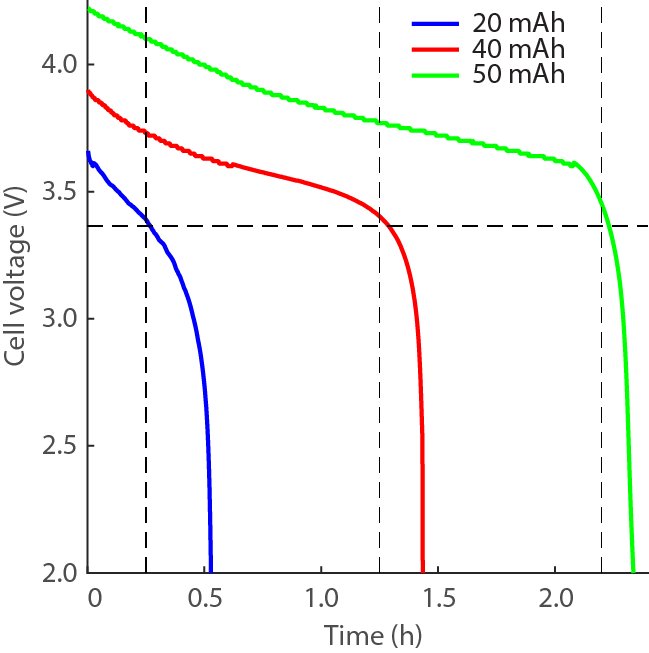 |
||
| Dynamics of discharge of three different types of lithium-polymeric batteries attached to Neurologger 3 |
| Neurologger 3 has extremely low noise and electromagnetic disturbances, see two records below, F = 1-3300 Hz. Duration of each fragment is 1 second. A sequence of 10 μV peak-to-peak rectangular pulses was given to the input of the logger either directly (top chart), or through 1 MΩ resistor (bottom chart). The last (top) channel was connected to the microphone to recorded environmental sounds. 10 μV step is clearly visible in both records. |
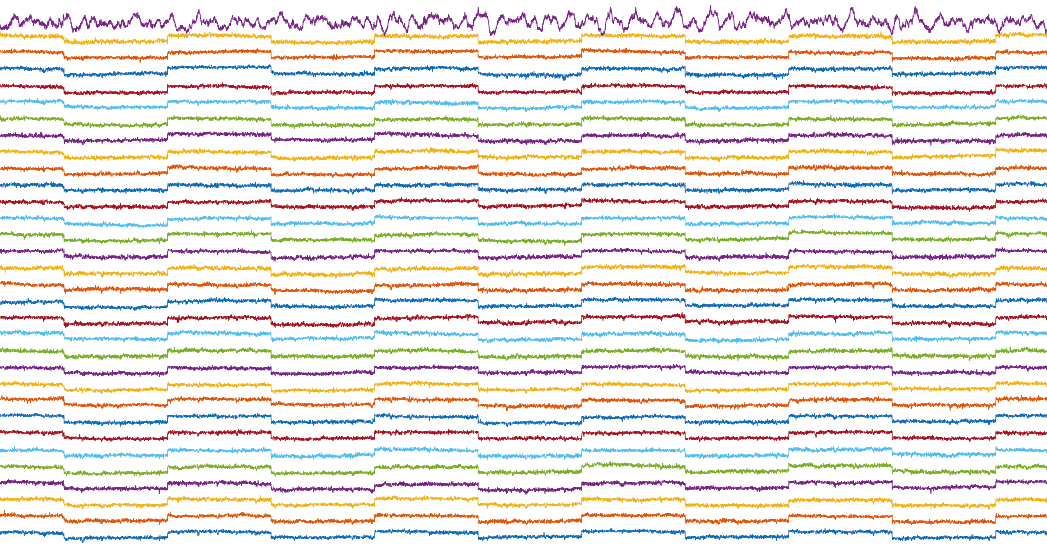 |
| Neurologger 3 test record with low-impedance signal source giving 10 μV rectangular pulses at 5 Hz |
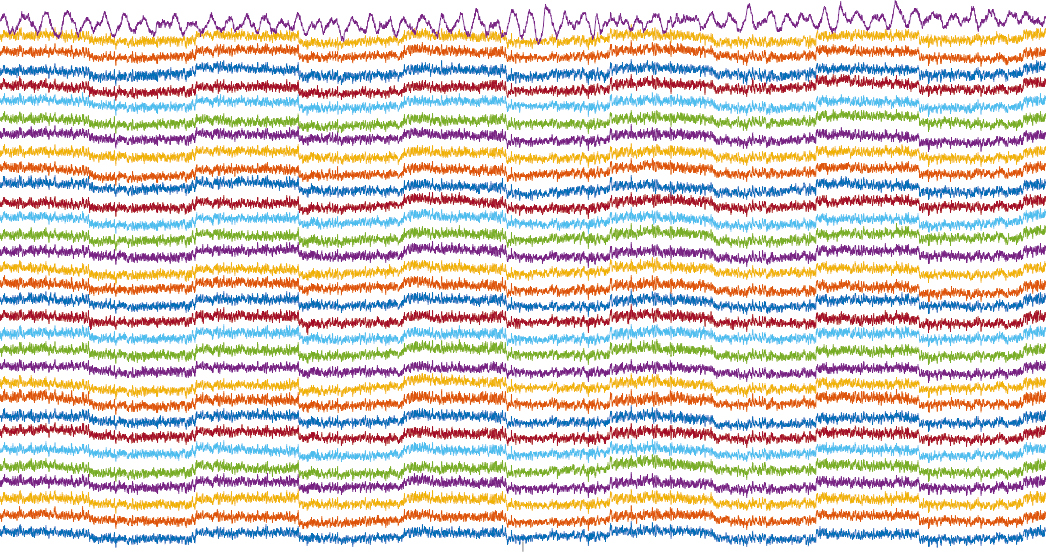 |
| The same but with 1 MOhm signal source |
Neurologger is a registered trademark.
Protected by U.S. patents #8,160,688; #9,492,085; #11,134,864. Other patents pending.